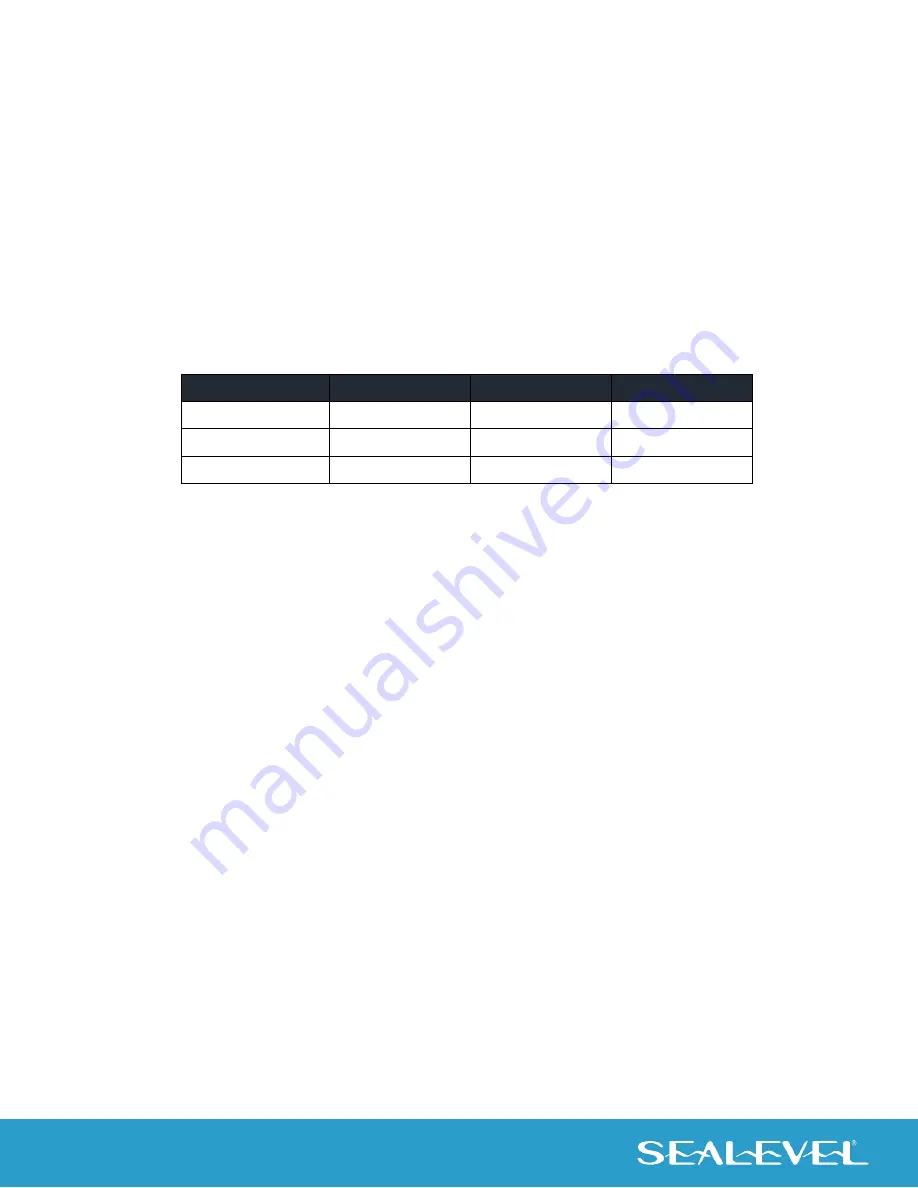
9
© Sealevel Systems, Inc. 7107 Manual | SL9055 7/2021
Card Setup
Address and IRQ Selection
The SIO4-104.485
is automatically assigned I/O addresses and IRQs by your motherboard BIOS. Only the
I/O address may be modified by the user. Adding or removing other hardware may change the assignment
of I/O addresses and IRQs.
Electrical Interface Selection
The SIO-485.LPCI
can be individually configured via SW1 as RS-422, or as a two/four wire RS-485 interface.
The following table illustrates the electrical modes for SW1:
Electrical Mode
Switch Position 1
Switch Position 2
Switch Position 3
RS-422
Off
Off
Off
RS-485 4 Wire
On
On
Off
RS-485 2 Wire
Off
On
On
Line Termination
Typically, each end of the RS-485 bus must have line-terminating resistors (RS-422 terminates at the receive
end only). A 120-ohm resistor is across the RS-422/485 data input in addition to a 1K-ohm pull-up/pull-
down combination that biases the receiver inputs. The 120-
Ohm termination is ‘switched’ in or out by SW1
(silk screen position ‘T’). With the switch in the ‘On’ position, termination is present. With it in the ‘Off’
position termination is removed.
RS-485 'Echo'
The RS-
485 ‘Echo’ is the result of connecting the receiver inputs to the transmitter outputs. Every time a
character is transmitted; it is also received. The SIO-485.LPCI automatically suppr
esses this ‘Echo.’
Clock Modes
The SIO-485.LPCI
utilizes a 14.7456 MHz oscillator. This is eight times faster than the standard COM: port
oscillator, which typically is 1.8432 MHz. This allows the adapter to achieve a maximum data rate of
921.6Kbps. The following sections outline the baud rate calculations and instructions for achieving your
desired baud rate.
Baud Rates and Oscillator Value
The following table shows some common data rates and the rates you should choose to achieve them
when using the SIO-485.LPCI. If the O/S of choice is Windows 95/98/ME/2000/NT/XP, the oscillator value
(14.7456 MHz) should be entered into the ‘Advanced Tab’ on 95/98/Me/2000/XP Device Manager applet.
Typically, this is done automatically when the Sealevel Software driver is loaded.



































